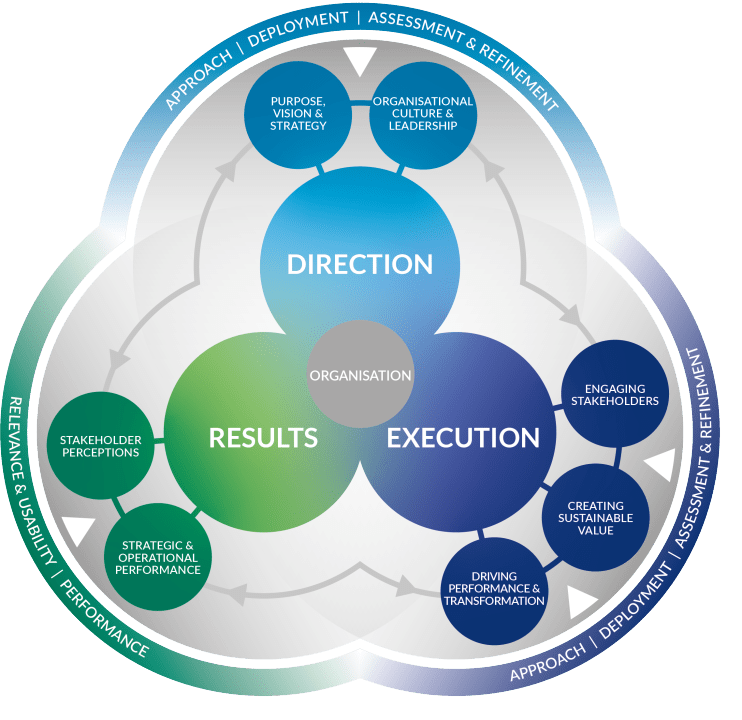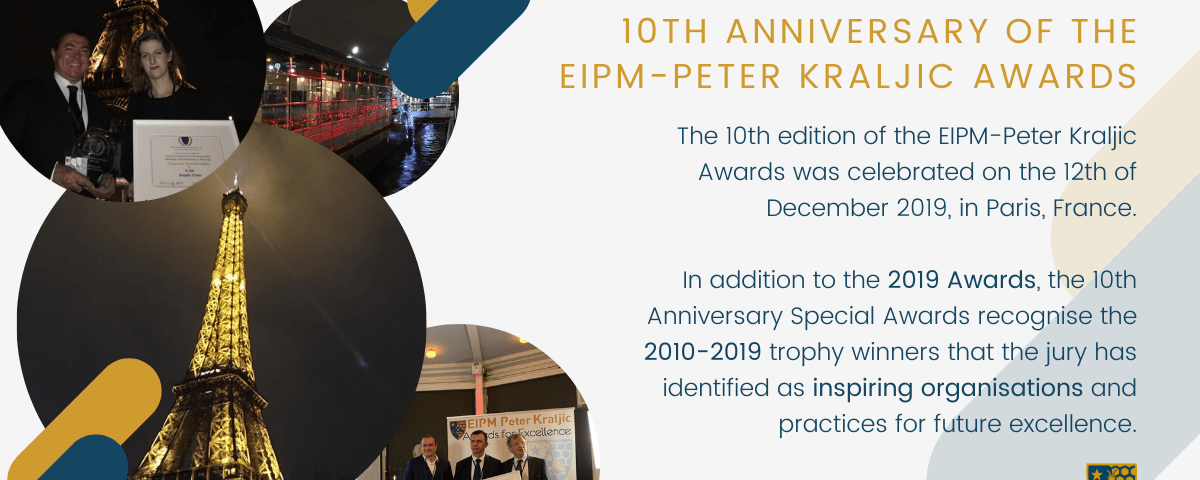I have seen with great pleasure the new version of the EFQM Excellence model. Having been at the periphery of the EFQM community for ten years now, this is an interesting exercise. I believe this new version is a great step forward that builds on the foundations of the Excellence movement while addressing some contemporary challenges.
In terms of foundation, I am glad to see the word execution at the center of the new EFQM model. The Excellence movement have always focused on getting things done and on the quality and depth of execution. I am glad to see this so clearly at the center of the model. Today there are a lot of agitated people who rush from project to another and bump into glass walls. We hear a lot about the agile imperative but systematic ways of working that combine simplicity, collaboration, speed and value creation are still scarce. Too often transformation programs are piling up on each other. Instead of focusing on a few breakthrough goals for the whole organization, every department and units pursue their own transformation programs and require the contribution of others. This leads to a collaboration overload and rigidifies organizations. The revised EFQM model recognizes that multiple change can impact an organization, but it also advocates that organization should have one purpose, one vision and transform themselves accordingly. It is good to see this so clearly on the forefront of the revised EFQM model.
In terms of contemporary challenges, I believe that the extensive use of the word ecosystem within the new EFQM model is a great step forward. Thirty years ago, industries were depicted as a chain of players with sequential inputs and outputs. Industries were giant economic silos that have now merged, recombined and interpenetrated each other. Innovation is everywhere and continuously accelerating. As the result, traditional value chains are shaken. We now have dynamic ecosystems with organizations that simultaneously collaborate and compete against each other. These ecosystems are going through steady and sometime rapid evolution. All organisation tries to escape the commodity trap and to regain differentiation by harnessing open innovation and external opportunities. So, thank you EFQM for helping people reflect on ecosystems.
Finally, I might share a call to go even further in the future. A lot of change has been implemented in the revised EFQM model. This is great. But moving from an assessment to a transformation logic might require more than a gentle upgrade of the RADAR logic. RADAR is great for assessing advanced organisation. Let’s use it for this. To help organisation transform I would encourage EFQM to develop a forward looking way to use its revised model.
I have seen with great pleasure the new version of the EFQM Excellence model. Having been at the periphery of the EFQM community for ten years now, this is an interesting exercise. I believe this new version is a great step forward that builds on the foundations of the Excellence movement while addressing some contemporary challenges.
In terms of foundation, I am glad to see the word execution at the center of the new EFQM model. The Excellence movement have always focused on getting things done and on the quality and depth of execution. I am glad to see this so clearly at the center of the model. Today there are a lot of agitated people who rush from project to another and bump into glass walls. We hear a lot about the agile imperative but systematic ways of working that combine simplicity, collaboration, speed and value creation are still scarce. Too often transformation programs are piling up on each other. Instead of focusing on a few breakthrough goals for the whole organization, every department and units pursue their own transformation programs and require the contribution of others. This leads to a collaboration overload and rigidifies organizations. The revised EFQM model recognizes that multiple change can impact an organization, but it also advocates that organization should have one purpose, one vision and transform themselves accordingly. It is good to see this so clearly on the forefront of the revised EFQM model.
In terms of contemporary challenges, I believe that the extensive use of the word ecosystem within the new EFQM model is a great step forward. Thirty years ago, industries were depicted as a chain of players with sequential inputs and outputs. Industries were giant economic silos that have now merged, recombined and interpenetrated each other. Innovation is everywhere and continuously accelerating. As the result, traditional value chains are shaken. We now have dynamic ecosystems with organizations that simultaneously collaborate and compete against each other. These ecosystems are going through steady and sometime rapid evolution. All organisation tries to escape the commodity trap and to regain differentiation by harnessing open innovation and external opportunities. So, thank you EFQM for helping people reflect on ecosystems.
Finally, I might share a call to go even further in the future. A lot of change has been implemented in the revised EFQM model. This is great. But moving from an assessment to a transformation logic might require more than a gentle upgrade of the RADAR logic. RADAR is great for assessing advanced organisation. Let’s use it for this. To help organisation transform I would encourage EFQM to develop a forward looking way to use its revised model.
Join the discussion! Share your views on my post on LinkedIn!
Hervé Legenvre, PhD
EIPM Value Creation Observatory Director
Share this:
- Click to print (Opens in new window)
- Click to share on Facebook (Opens in new window)
- Click to share on LinkedIn (Opens in new window)
- Click to share on Twitter (Opens in new window)
- Click to share on Google+ (Opens in new window)
- Click to share on Pinterest (Opens in new window)
- Click to share on Skype (Opens in new window)
- Click to share on WhatsApp (Opens in new window)





